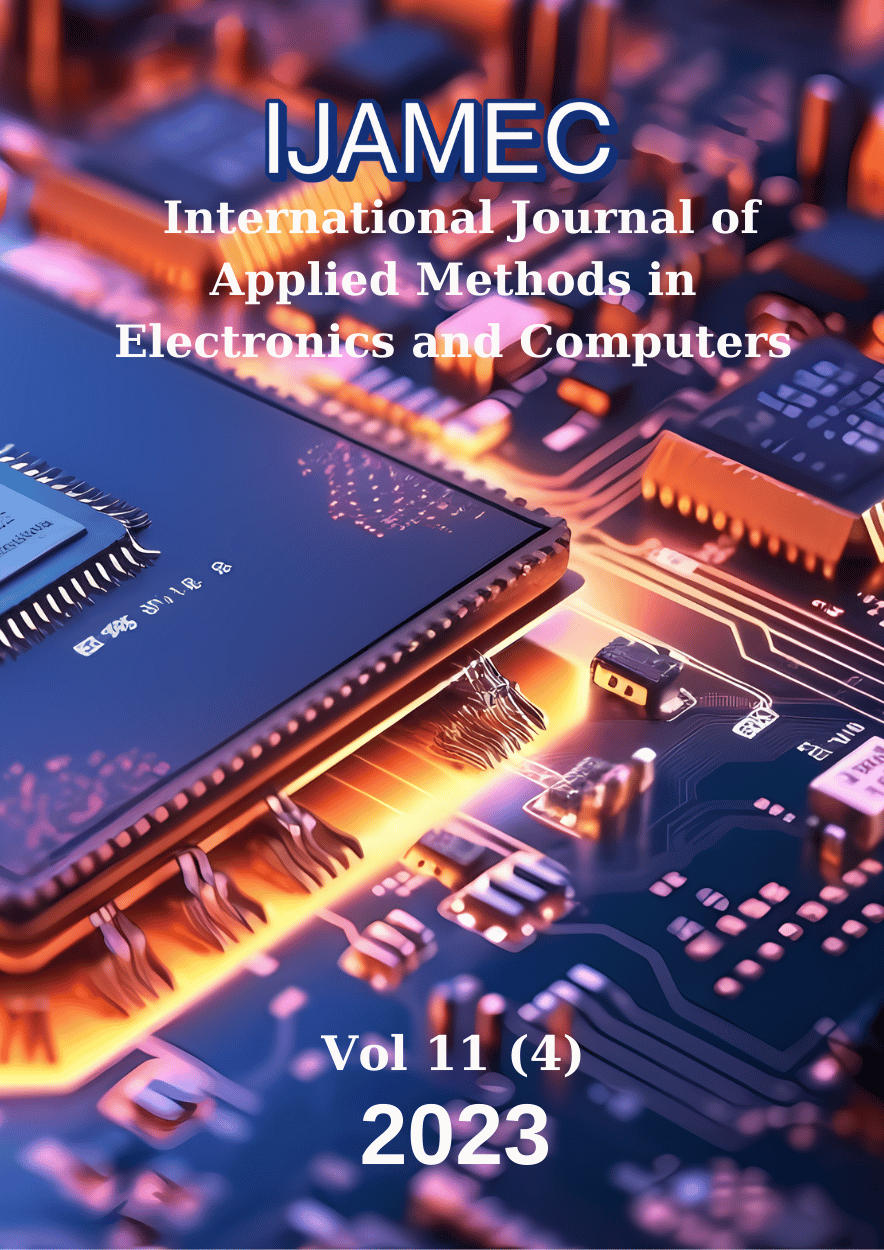Feedforward Neural Network-Based Indoor Air Quality Detection System
DOI:
https://doi.org/10.58190/ijamec.2023.64Keywords:
Indoor air quality, Internet of things, Smart home systems, IoT-based air quality, Air pollution monitoringAbstract
Indoor air quality is crucial for the sustainability of human life quality. Therefore, improving indoor air quality is critical for enhancing life quality. In this study, an artificial intelligence-based indoor air quality monitoring system is designed. The system consists of two main parts, hardware and software. The hardware part includes a control card and various sensors. The software part includes a C-based IDE software and a feedforward network, a deep learning algorithm, for establishing the connection between the control card and the sensors. The temperature, humidity, and gas concentration values obtained from the sensors at certain intervals were fed to the feedforward network's input layer through the control card. The feedforward network consists of the input layer, hidden layer, and output layer, and the decision on whether the air quality is normal or not was made at the output. The system described in this study is intended to provide a real-time monitoring solution for indoor air quality. By using a feedforward neural network, the system is able to learn patterns in the sensor data and detect changes in air quality that may indicate a problem. The system can be customized to suit the needs of different environments and can be used in a variety of settings, including homes, offices, and public spaces. Ultimately, the goal of the system is to improve human health and well-being by ensuring that indoor air quality is at a safe and healthy level.
Downloads
References
M. Neira, A. Prüss-Ustün, and P. Mudu, "Reduce air pollution to beat NCDs: from recognition to action," Lancet, vol. 392, no. 10154, pp. 1178-1179, 2018.
V. V. Tran, D. Park, and Y.-C. Lee, "Indoor air pollution, related human diseases, and recent trends in the control and improvement of indoor air quality," International journal of environmental research public health, vol. 17, no. 8, p. 2927, 2020.
J. Esquiagola, M. Manini, A. Aikawa, L. Yoshioka, and M. Zuffo, "SPIRI: Low Power IoT Solution for Monitoring Indoor Air Quality," in IoTBDS, 2018, pp. 285-290.
D. Wall, P. McCullagh, I. Cleland, and R. Bond, "Development of an Internet of Things solution to monitor and analyse indoor air quality," Internet of Things, vol. 14, p. 100392, 2021.
L. Dietz, P. F. Horve, D. A. Coil, M. Fretz, J. A. Eisen, and K. Van Den Wymelenberg, "2019 novel coronavirus (COVID-19) pandemic: built environment considerations to reduce transmission," Msystems, vol. 5, no. 2, pp. e00245-20, 2020.
C. S. Hayles, M. Huddleston, P. Chinowsky, and J. Helman, "Summertime impacts of climate change on dwellings in Wales, UK," Building Environment, vol. 219, p. 109185, 2022.
S. U. Rani, S. Rajarajeswari, J. G. Jaimon, and R. Ravichandran, "Real-Time Air Quality Monitoring System Using MQ-135 and Thingsboard," Journal of critical reviews, vol. 7, no. 18, pp. 4107-4115, 2020.
M. Zhou, A. M. Abdulghani, M. A. Imran, and Q. H. Abbasi, "Internet of things (IoT) enabled smart indoor air quality monitoring system," in Proceedings of the 2020 international conference on computing, networks and internet of things, 2020, pp. 89-93.
A. Sarkar, "Design of automatic hand sanitizer with temperature sensing," International journal of innovative science research technology, vol. 5, no. 5, pp. 1269-1275, 2020.
F. M. Sharmila, P. Suryaganesh, M. Abishek, and U. Benny, "IoT based smart window using sensor Dht11," in 2019 5th International Conference on Advanced Computing & Communication Systems (ICACCS), 2019, pp. 782-784: IEEE.
R. Ganiyu, O. Arulogun, and O. Okediran, "Development of a wireless sensor network for monitoring environmental condition on a farmland," International Journal of Applied Information Systems (IJAIS), vol. 7, no. 3, pp. 28-34, 2014.
Available: https://components101.com
S. Kumar and A. Jasuja, "Air quality monitoring system based on IoT using Raspberry Pi," in 2017 International conference on computing, communication and automation (ICCCA), 2017, pp. 1341-1346: IEEE.
F. N. Abbas, M. I. M. Saadoon, Z. K. Abdalrdha, and E. N. J. I. J. E. R. T. Abud, "Capable of gas sensor MQ-135 to monitor the air quality with Arduino Uno," vol. 13, no. 10, pp. 2955-2959, 2020.
D. A. Aziz, "Webserver based smart monitoring system using ESP8266 node MCU module," International Journal of Scientific Engineering Research, vol. 9, no. 6, pp. 801-808, 2018.
B. Sarwar, I. S. Bajwa, S. Ramzan, B. Ramzan, and M. Kausar, "Design and application of fuzzy logic based fire monitoring and warning systems for smart buildings," Symmetry, vol. 10, no. 11, p. 615, 2018.
M. Fezari and A. Al Dahoud, "Integrated development environment “IDE” for Arduino," WSN applications, pp. 1-12, 2018.
V. Nair and G. E. Hinton, "Rectified linear units improve restricted boltzmann machines," in Proceedings of the 27th international conference on machine learning (ICML-10), 2010, pp. 807-814.
Downloads
Published
Issue
Section
License
Copyright (c) 2023 International Journal of Applied Methods in Electronics and Computers

This work is licensed under a Creative Commons Attribution-ShareAlike 4.0 International License.





